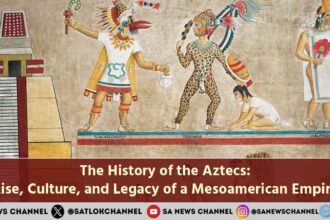The Great Depression stands as one of the darkest and most challenging periods in modern economic history. This catastrophic global downturn that began in 1929 altered the financial landscape, shattered economies, and left millions jobless and destitute. While rooted primarily in the United States, the Depression’s ripple effects extended across continents, sparking political change and redefining government roles in the economy. Understanding its causes, consequences, and responses helps us better grasp the vulnerabilities of our global financial systems.
- Origins of the Great Depression: The Roaring Twenties and the Illusion of Prosperity
- The Wall Street Crash of 1929
- Global Spread of the Depression
- Human Impact: The Social Toll of the Depression
- The Government’s Early Response
- The New Deal and Roosevelt’s Reforms
- Cultural and Political Changes During the Depression
- End of the Great Depression
- Lessons Learned from the Great Depression
- Reflections on a Global Economic Wake-Up Call
- Spiritual Perspective: Seek beyond wealth
- FAQs about the history of the Great Depression
- 1. What were the main causes of the Great Depression?
- 2. How did the Great Depression affect everyday people?
- 3. What was the New Deal, and how did it help during the Depression?
- 4. When and how did the Great Depression end?
- 5. Can a depression like this happen again in modern times?
- Connect With Us on the Following Social Media Platforms
Origins of the Great Depression: The Roaring Twenties and the Illusion of Prosperity
The 1920s in the United States, often referred to as the “Roaring Twenties,” was a decade marked by rapid industrial growth, consumerism, and stock market speculation. The economy appeared to flourish, with rising incomes, booming industries, and a surge in consumer credit. However, beneath this surface of prosperity lay several structural weaknesses:
- Overproduction in agriculture and manufacturing
- Unequal distribution of wealth
- Excessive reliance on credit and speculative investments
- A fragile banking system with minimal regulation
This economic model created a bubble that was bound to burst.
The Wall Street Crash of 1929
On October 29, 1929, now known as Black Tuesday, the U.S. stock market collapsed. After a week of panic selling, stock prices plummeted, wiping out billions in market value. This crash was not the sole cause of the Great Depression, but it served as a catalyst, accelerating the economic decline that followed.

Banks began to fail as panicked depositors rushed to withdraw savings. With no federal insurance, these bank collapses devastated countless American families. Credit dried up, businesses failed, and unemployment soared. By 1933, nearly 25% of the American workforce was without a job.
Global Spread of the Depression
The Great Depression did not remain confined to the United States. The global economy was deeply interconnected through trade, investment, and gold standards. As the U.S. economy contracted:
- Germany saw a withdrawal of American loans, causing massive unemployment and social unrest.
- Britain experienced economic stagnation, leading to currency devaluation and rising poverty.
- France, Italy, and Canada similarly faced severe contractions in industry and trade.
- Colonial economies in Africa, Asia, and Latin America suffered falling commodity prices and declining exports.
Protectionist policies like the Smoot-Hawley Tariff Act of 1930 worsened the situation by restricting international trade and triggering retaliatory tariffs.
Human Impact: The Social Toll of the Depression
The economic collapse was not merely a matter of numbers; it was a humanitarian crisis. Across the United States and the world:

- Families lost homes and farms, often due to foreclosure and tax delinquency.
- Soup kitchens and breadlines became common in urban areas.
- Dust Bowl migrants from the American Midwest, affected by both economic ruin and environmental disaster, headed west in search of work and hope.
- Birth and marriage rates declined, and suicide rates tragically rose during the early 1930s.
The suffering was widespread, cutting across urban and rural divides, affecting white and Black communities, and reshaping attitudes toward poverty and government.
The Government’s Early Response
Initially, President Herbert Hoover believed the Depression was a temporary downturn. He promoted voluntary business cooperation and limited federal intervention. However, as the crisis deepened, public confidence in Hoover waned. His administration’s response, including the creation of the Reconstruction Finance Corporation, was seen as too little, too late.
Also Read: Biography of Franklin D. Roosevelt: The Man Who Led America Through Crisis
The situation set the stage for a dramatic political shift.
The New Deal and Roosevelt’s Reforms
In 1933, Franklin D. Roosevelt assumed the presidency and introduced a sweeping set of programs known as the New Deal. His approach marked a significant shift in the role of the federal government in economic management.
Key New Deal Programs
1. Civilian Conservation Corps (CCC): Provided jobs in conservation and public works.
2. Public Works Administration (PWA): Funded large-scale infrastructure projects.
3. Agricultural Adjustment Act (AAA): Aimed to stabilize farm prices through subsidies and reduced production.
4. Tennessee Valley Authority (TVA): Brought electrification and economic development to the rural South.
5. Social Security Act (1935): Established pensions for the elderly and unemployment insurance.
While the New Deal did not end the Depression, it restored public confidence, restructured the banking system (via the FDIC and Glass-Steagall Act), and laid the foundation for a modern welfare state.
Cultural and Political Changes During the Depression
The Great Depression also profoundly influenced culture and politics. Literature, film, and music reflected the grim realities of the time. Writers like John Steinbeck captured the plight of ordinary Americans, while folk music became a medium for expressing resistance and resilience.

Politically, the Depression led to:
- Increased union activity, supported by labor-friendly New Deal laws.
- Expanded government bureaucracy to manage relief and recovery programs.
- The rise of populist leaders in various countries, some of whom would later steer their nations toward authoritarianism.
The global chaos also contributed to the rise of extremist ideologies, particularly fascism in Germany and Italy, setting the stage for World War II.
End of the Great Depression
Contrary to popular belief, the Depression did not officially end with the New Deal. Recovery was gradual and uneven. The definitive end came with the advent of World War II, which spurred massive industrial mobilization and full employment.
Factories reopened to produce war supplies, and millions of men and women joined the workforce. The war economy revived demand and innovation, finally pulling the U.S. and other nations out of depression.
Lessons Learned from the Great Depression
The Great Depression left lasting lessons that reshaped global economic policy:
- Stronger banking regulations were introduced to prevent future collapses.
- Government became a central player in managing economic cycles, particularly through Keynesian policies.
- Social safety nets, such as unemployment insurance and retirement benefits, became integral.
- Global cooperation in economic matters, seen later in institutions like the International Monetary Fund (IMF) and World Bank, was prioritized to avoid another global collapse.
These changes fundamentally altered the capitalist framework and informed policy responses to future crises, including the 2008 financial meltdown.
Reflections on a Global Economic Wake-Up Call
The Great Depression stands as one of the most defining chapters in modern history. It didn’t just destabilize financial markets, it altered the very fabric of societies, governance, and international cooperation. The crisis revealed both the fragility of economic systems and the remarkable resilience of the human spirit.
More than a historical case study, the Depression serves as a sobering reminder of the need for foresight, balanced economic policies, and shared accountability. As economists, policymakers, and even spiritual thinkers reflect on its lessons, one truth remains clear: remembering the past is essential to safeguarding the future.
Spiritual Perspective: Seek beyond wealth
The Great Depression was more than an economic catastrophe; it was a spiritual reckoning. As stock markets crumbled and wealth evaporated overnight, millions were forced to confront a hard truth material riches are fleeting. In the face of immense loss, people turned to one another and to faith, seeking comfort beyond the instability of worldly possessions. This period revealed that human systems, however sophisticated, are fragile and unreliable.
According to the divine teachings of Chyren Sant Rampal Ji Maharaj, true and lasting peace does not lie in economic success or social status but in sincere devotion to the Supreme God, who alone can grant eternal security. While governments scrambled to repair economic structures, many souls quietly awakened to the futility of chasing impermanent goals and began seeking higher, spiritual truths.
Sant Rampal Ji Maharaj explains through the evidence-based spiritual knowledge found in our holy scriptures that human life is not meant merely for survival or prosperity but for attaining salvation (Moksha) by worshipping the Complete God (Kabir Saheb) with the correct way of worship (Sat Bhakti). The Great Depression stands as a historical reminder that when all else fails, true refuge can only be found in the Supreme God, who is unaffected by time, crisis, or circumstance.
To access this rare and authentic spiritual wisdom that can transform suffering into salvation, download the free “Sant Rampal Ji Maharaj” app from the Play Store today and discover the eternal path to peace and liberation.
FAQs about the history of the Great Depression
1. What were the main causes of the Great Depression?
The Great Depression was triggered by multiple factors, including the 1929 stock market crash, overproduction in agriculture and industry, unequal wealth distribution, excessive speculation using borrowed money, and weak banking regulations. Global trade tensions and the collapse of the gold standard further deepened the crisis, turning a national downturn into a worldwide depression.
2. How did the Great Depression affect everyday people?
The Depression had devastating effects on ordinary lives. Millions lost jobs, homes, and savings. Families relied on soup kitchens, migrated in search of work, and often lived in makeshift shantytowns. Many farmers were displaced by foreclosures and environmental disasters like the Dust Bowl, leading to widespread poverty and mental stress.
3. What was the New Deal, and how did it help during the Depression?
The New Deal was a series of economic and social reforms introduced by President Franklin D. Roosevelt in the 1930s to combat the effects of the Great Depression. It included job creation programs, social security, financial regulation, and support for farmers. While it didn’t fully end the Depression, it stabilized the economy and restored public confidence.
4. When and how did the Great Depression end?
The Great Depression gradually ended during the early 1940s, largely due to the economic mobilization for World War II. The war effort boosted industrial production, created millions of jobs, and stimulated global trade, pulling the U.S. and other countries out of prolonged economic stagnation.
5. Can a depression like this happen again in modern times?
While today’s financial systems have more safeguards like deposit insurance, central bank interventions, and regulatory frameworks, economic crises can still occur. Events like the 2008 global financial crisis showed that economic vulnerabilities persist. Studying the Great Depression helps policymakers avoid similar collapses through proactive and balanced economic policies.









